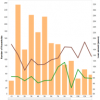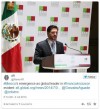2019 marks ten editions of the European Microfinance Award and to celebrate, e-MFP has decided to reach out to the previous winners, for a ‘where are they now?’ blog series, published throughout 2019, to look at what they have been doing with their initiative since they won, and how the winning of the Award has helped, and what plans they have in store. In 2017, the theme of the Award was 'Microfinance for Housing' which sought to highlight the role of microfinance in supporting access to better quality residential housing for low income, vulnerable and excluded groups, with no or limited access to housing finance in the mainstream sector. Cooperativa de Ahorro y Préstamo Tosepantomin won for its programme targeting rural communities living in marginalised areas, to which it offers savings and loans for housing improvement and house building. The cooperative mainly applies the solidarity group methodology and uses a holistic approach to its housing programme, with technical support that includes architectural planning, elaboration of housing project budgets, and oversight of the construction processes. The programme also promotes ecological and sustainable housing through eco-friendly building techniques, recycling, renewable energy and energy efficiency. We’re delighted to catch up with them in the fifth of our interviews.






0